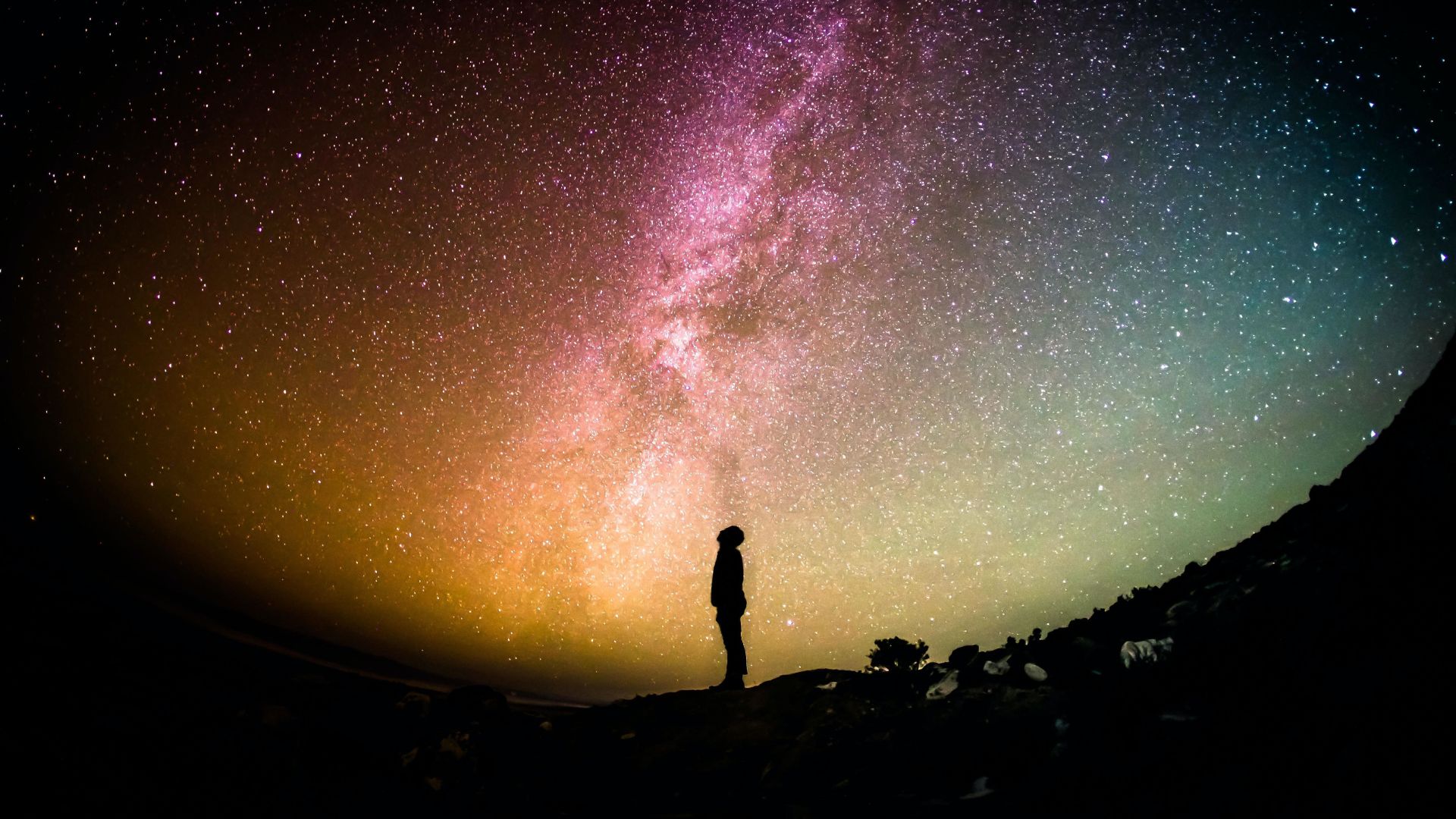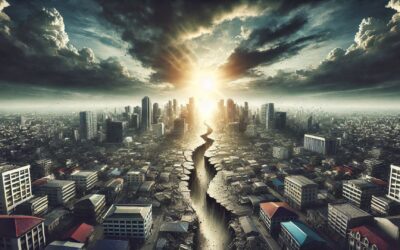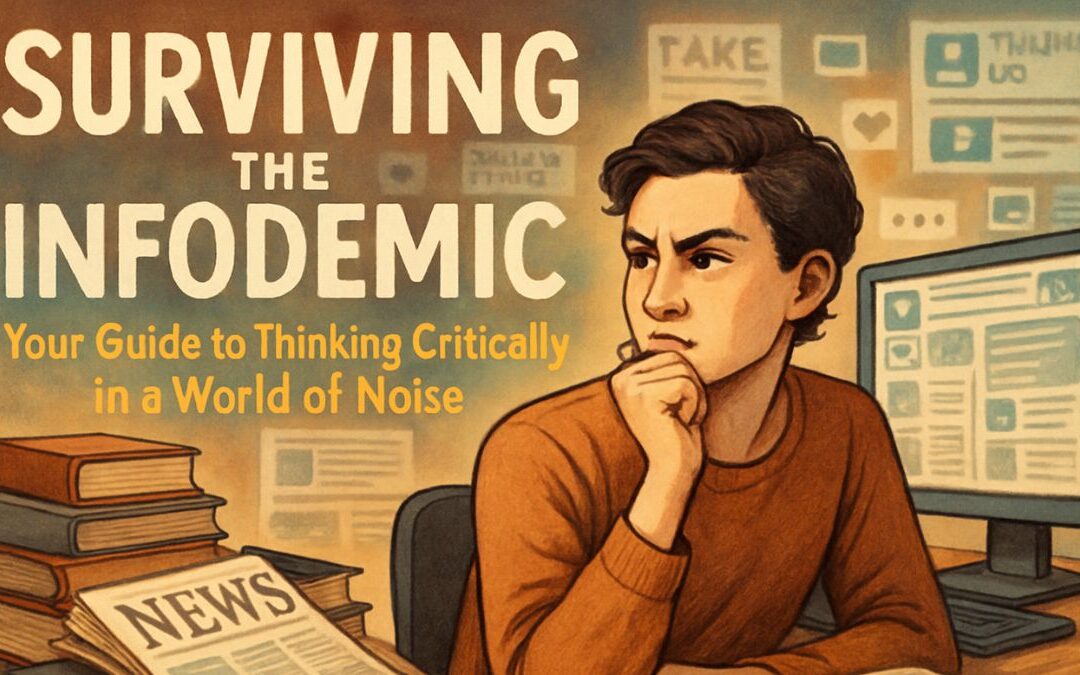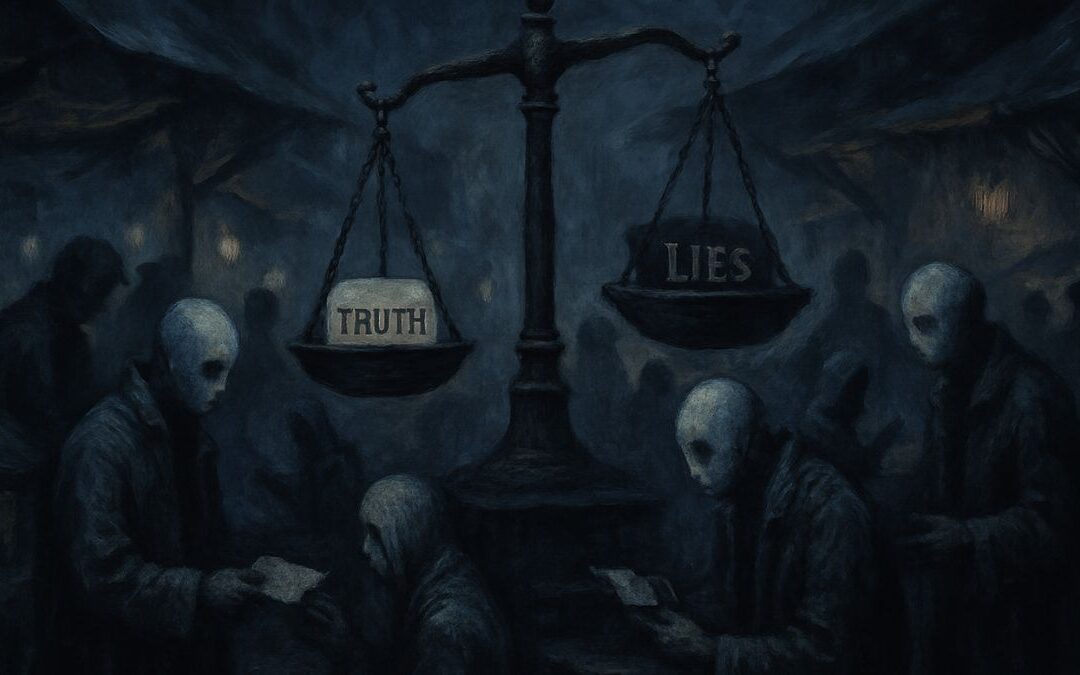Introduction
We keep wondering about many things happening around us or things that happened in the past and even things that will happen in the future and we find in most cases that we have no clue or we have a vague explanation at best, but that’s ok because these things keep driving us to learn more, trying to understand the mysteries all around us and that’s what makes us humans after all. In today’s episode of our Great Mysteries series, we will explore some of these questions. What is hidden in the emperors’ tomb besides the terra cotta army we can see? Where is Genghis Khan’s tomb? Was Machu Picchu a sacred site? Where is the Holy Grail? Can science find the source of consciousness? Why do we yawn? What’s the point of laughter? What is dark matter? What triggers an earthquake? Will we ever find Amelia Earhart? What happened to the Neanderthals? And finally, how will the universe end? These questions will be our quest in today’s new episode from our Great Mysteries series, presented to you by your host, Danny, and English Plus Podcast. Enjoy.
Audio Episode
Episode Transcript
0:03
We keep wondering about many things happening around us, or things that happened in the past, and even things that will happen in the future. And we find in most cases that we have no clue or we have a vague explanation at best, but that’s okay. Because these things keep driving us to learn more trying to understand the mysteries all around us. And that’s what makes us humans after all. In today’s episode of our great mystery series, we will explore some of these questions. What is hidden in the emperor’s tomb besides the Terracotta Army? Where is gank is Khan’s tomb? Was Machu Picchu a sacred site? Where is the holy grail? Can science find the source of consciousness? Why do we yawn?
0:52
What’s the point of laughter? What is dark matter? What triggers an earthquake? Will we ever find Amelia Earhart? What happened to the Neanderthals? And finally, how will the universe end? These questions will be our quest in today’s new episode from our great mystery series presented to you by your hosts, Danny and English plus podcast,
1:16
enjoy now before we start, let me remind you that you can find the transcript of this episode on the website the link is in the show notes. And while you’re there, take some time to explore the great many opportunities that you can find on the website to learn and have fun from the daily short reads to the new audio and video series to English plus bytes and more. And now without further ado, let’s start with our first question for today. What is hidden in the Emperor soon
1:55
China’s first Emperor Qin Shi Huang de wielded power as only a desperate can, uniting China’s warring states in 221 BC, the Emperor standardized Weights and Measures and built roads, canals and defensive walls throughout his realm. He also burned books and executed scholars. His most monomaniac Gold Project, however, was his own legacy. Obsessed with immortality, the Emperor conscripted some 700,000 laborers to build a city like Tomb guarded by a vast Terracotta Army 1000s of these warriors each vividly painted have been uncovered by archaeologists have size bronze horses and chariots also have been unearthed. Along with valuable artifacts made of silk, linen, Jade and bone, craftsmen, concubines and sacrifice. Slaves were buried in the compound as well and the workmen who built were killed to preserve its secrets. According to Han Dynasty historian Sima Chan, the tomb contains wonders a scale model of the entire empire, complete with birds of gold and silver, flowing rivers of mercury and a map of the sky with constellations of pearls. Chinese archaeologists are reluctant to disturb the delicate structure, but tests indicate that the tomb does contain high amounts of mercury, most of the muscle Liam remains uncovered and unknown. The Emperor himself has not been uncovered, and it is unclear if he ever will be, which would no doubt satisfy the autocratic ruler. So that was about the hidden emperor’s tomb. And that was our first question in today’s great mysteries episode, but that’s not everything. We still have a lot of questions to explore. And our very next question also has to do with tombs, but this time it is not the Chinese emperor, we’re talking about Genghis Khan. Where is gankers Khan’s tomb that is coming next, so don’t go away.
4:14
In his day, he was the terror of the world. Gank ISKCON, or chink has con built an army of ruthless horsemen and swept across Asia and into Europe in the 13th century, slaughtering entire cities and building pyramids of skulls. At its height, his empire spent 12 million square miles or 31 million square kilometers from the Mediterranean to the Yellow Sea. The Mongol leader bred as efficiently as he fought today, about 16 million people carry genes that can probably be traced to the conqueror. When Genghis Khan died in 1227, however, he vanished and the local ation of his tomb has been one of history’s best kept secrets. Apparently he wanted it that way. Although legend has it that the leader was taken back to his homeland in Mongolia for an elaborate burial. Some versions also state that the ground was then trampled by horses and planted with trees to hide the tombs presents after which the entire burial procession was murdered. Explorers are now using non invasive techniques to survey the Mongolian landscape from the air in hopes of identifying ancient structures such as burial mounds. So far, the land has kept the remains of the world’s greatest conqueror well hidden. So that was and still is one of the greatest mysteries when it comes to finding one of the world’s greatest conquerors final resting place. And we move from Gingka ISKCON and Mongolia all the way to South America and Machu Picchu. This is our very next question. And the question is, was Machu Picchu a sacred site that’s coming next, so don’t go away. He ran Bingham, the explorer who brought the Peruvian site of Machu Picchu to the world’s attention in 1913 called it the last city of the Incas. He believed the complex of stone palaces, temples, stone houses and dwellings might have been the one time city of Vilcabamba, where Inca rulers fought a losing battle against Spanish invaders, or else Bingham argued it was the home of virgins of the Sun holy women dedicated to the Inca sung God, more recent research has dashed Binghams romantic theories. Machu Picchu was certainly an Inca city, but not Vilcabamba and no trace of sacred virgins has been found. Given that the Inca left no written records however, archaeologists are still uncertain of the mountainous cities purpose or inhabitants. Recent theory suggests that the steeply terraced buildings may have been built as a retreat for the great Inca emperor Pachacuti in the 15th century. On the other hand, the site does appear to be a holy one enclosed by the sacred oral bomba River and aligned to the solstices, Machu Picchu may have been a site of spiritual pilgrimage, or possibly both a royal residence and a sacred destination. Researchers continue to excavate the site hoping to find clues to the impressive city’s inhabitants. And the reason for its abandonment in the 1570s. So that was about Machu Picchu, and we will move from Machu Picchu to another area of the world and another great quest, this quest that inspired many legends, many tales, even books and movies, and it still inspires to this very day. And here we’re talking about the Holy Grail. The question is, where is the holy grail that is coming next, so don’t go away.
8:20
Though it is traditionally held to be the cup used by Jesus at the Last Supper. The Holy Grail as such did not appear in literature until the 12th century, when French poet Chretien de toi wrote Percival The Story of the Grail. In this unfinished romance. The Grail is a serving dish, one of several mystical objects paraded before the young Percival. The Grail was not associated with the Last Supper until the next century. In Robert the bronze poem, Joseph of armor Thea. From there, the legend of the Grail blossomed, along with Arthurian romances in a mix of Celtic and Christian symbolism, fact and fantasy. It was the object of literary quests, particularly that of the pure Sir Galahad. Some said the Knights Templar rescued it from Jerusalem and hid it all to successfully, many locations from Spain to Maryland have claimed to possess the true Grail. The Grail is almost certainly a purely literary invention. Historians believe that if any cup used by Jesus did somehow survive over the centuries, it would be unidentifiable today, hidden indeed by time, maybe it is, maybe it is not, who knows. But what we know for sure is that nobody can tell you for sure where the Holy Grail is, or even better what the Holy Grail is, if there is any. So that was our next question in today’s episode of great mysteries, and our next mystery has to do with science and consciousness. And our question is Can Science find the source of consciousness. That is our next question don’t go away.
10:09
It’s an old old question tackled by philosophers and scientists and children alike. What is the self that experiences the world? Is our sense of subjectivity of identity or sentience, strictly a physical result of our big brains? Or is the mind distinct from the body? Scientists have typically approached the question from the perspective of brain structure. Perhaps some theorize there is a critical point at which the sheer number of neuronal connections between the cerebral cortex and the rest of the brain gives rise to conscious experience. From a physical perspective, our experience of the world seems to arise from the organized interaction among the emotional, sensory, and executed portions of the brain. This still leaves many questions however, are we unconscious when asleep? What about when we take action before becoming aware of our decision? Could an advanced computer become conscious? Many also wonder, Are we the only conscious animals not according to the 2012 conference on consciousness in human and non human animals? Scientists set the meeting after reviewing studies of such animals as grey parrots, elephants and octopuses issued a declaration that said among other things, the weight of evidence indicates that humans are not unique in possessing the neurological substrates that generate consciousness. So what we know for sure is that science still can’t answer this question. Clearly, we have theories, so it is still a mystery. Until we have a clear answer. We cannot say that we do understand what consciousness is all about. So can science ever find the source of consciousness? I guess time will tell. But that is one other mystery. And one other question. In today’s episode, great mysteries. That’s not everything. Remember, we still have a few questions to tackle in this episode. And our very next question is something that might seem too irregular to you to be a mystery at all. But it is a mystery. And this is about yawning. Why do we yawn? That’s what we’re going to talk about next. So don’t go away.
12:36
snakes do it. Cats do it. Even fetuses in the womb do it. All sorts of animals yawn and we don’t know the reason why. When we yawn, we extend our jaws and inhale, our eardrum stretching. Then we exhale, people yawn when tired or bored, but also when nervous it’s pretty much an involuntary act. Well, you can fake yawning but it’s not quite the same. The logical theory that yawning expels carbon dioxide from a tired body helping it to wake up has been largely debunked. However, the very movement may stimulate alertness. Increased levels of neurotransmitters such as serotonin and dopamine are associated with increased yawning whereas a boost of endorphins reduces yawns. Recent research has focused on temperature when we yawn, our maxillary sinus which is an air filled sac next to the nose expands and pumps cool air to the brain. Scientists have found that brain temperature rises just before a yawn and drops afterward. Yawns are famously contagious, at least among most humans, and some animals studies show that people who are more empathic are more likely to yawn when they see others do it. Even dogs highly attuned to social cues, will yawn when they see a human yawn. Infants and autistic children on the other hand, do not. So do we have a reason? Do we have a clear reason why we on Absolutely not? We have again, we have theories, but we don’t have a clear answer. And that’s why this question qualifies to be in our series, great mysteries. And that was one of our great mysteries, and the next one has to do with something similar, but not yawning. We’re talking about laughter what’s the point of laughter that’s coming next don’t go away. Understanding laughter is different from understanding humor. Although both are mysterious in their own ways. The short vocalized exhalations and stretched facial muscles that constitute laughter are involuntary responses evident in humans from about three or four months of Age, the sound seems to be controlled by older parts of the brain associated with breathing. Not surprisingly, it reduces stress and produces positive feelings. Neurons associated with pleasure light up in scans when people laugh. People laugh most often in ordinary, that is not especially funny situations, researchers observing social interactions found that laughter most typically followed routine observations such as here comes Mary, or how did you do on the test laughter seems to have less to do with humor per se than it does with social bonding. People share laughter when danger has passed, they seem to use it to promote trust, as well as indicate a place in the social hierarchy. Dominant figures in a group laugh the most just why this physical response evolved in this way and how humor triggers it are still in question. And who knows? The answers may turn out to be funny, but we still don’t have them. And that’s why this question qualifies to be one of our mysteries in today’s episode. And now moving on to something that is really mysterious, and kind of difficult that most people don’t know anything about that thing. And we’re talking about dark matter what is dark matter, you might have heard of it. You might have heard of it in movies and stuff or read about it somewhere. But most people don’t know what dark matter is. And I don’t want to disappoint you. I’m not going to tell you what dark matter is because we don’t actually know what it is. But that is why it is a mystery. And that’s what we’re going to talk about next.
16:35
So don’t go away. Swiss astronomer Fritz Zwicky, studying rotating galaxy clusters in the 1930s came to an unsettling conclusion. At the speeds he observed, the clusters should be flinging their stars into space, like unfortunate children who had lost their grip on a merry go round. The only way the clusters could be holding together would be if they contained much more mass than anyone had seen. Later, measurements of galactic motion cemented the mystery of dark matter. Physicists now believe that about 27% of the matter in the universe consists of this unknown substance which doesn’t emit or reflect light, dark matter might consist of ordinary unseen objects such as massive brown dwarf stars and black holes. Scientists have a second candidate though weakly interacting massive particles, or wimps for short. These exotic particles would have very little mass individually and therefore be hard to detect, but could be so numerous and widespread that they would have the requested gravitational effect. Experiments aboard the International Space Station have detected high energy particles that might maybe just possibly have been cast off by the collision of particles of dark matter. But do we have clear answers? Do we have definitive answers to that? What is dark matter? No one knows for sure. We all have theories about them. Maybe you will know in the future, maybe we won’t. And maybe when we know it is not going to be that big of a deal, or it is going to change our very understanding of the universe. Who knows. But that is another mystery to add to our great mystery series. And the next one has to do with earthquakes. Now we all know earthquakes. We all know how they work. But what triggers an earthquake? You might say that, yeah, we learned that at school and we know exactly what triggers an earthquake. Well think again, because we don’t have a clear answer to this specific question, what triggers an earthquake, and that’s coming next, so don’t go away. The earthquake that struck in 1211 off the east coast of Honshu, Japan’s largest island was a nightmare come to life. The magnitude nine quake and resulting 97 foot high or 30 meters tsunami killed more than 15,000 people and destroyed more than 300,000 buildings. No one predicted the quake because no one could scientists know the basic mechanism of earthquakes. Simply put for earthquakes not related to a volcanic eruption. Two blocks of Earth sliding along a fault line build up energy from friction and then suddenly release it when a block overcomes the friction and jolts forward the energy then moves in waves through the ground shaking the surface. many mysteries remain however, why for instance, does the friction suddenly ease does the rock become molten along the fault or boundary like talc? Why are so many earthquakes minor when lab simulations predict they should be devastating. Pressure from water in reservoirs or wastewater injected into the ground during natural gas drilling seem to sometimes trigger quakes. But how? And are these quakes dangerous? We don’t have firm answers to these questions and science is still at a loss to predict the next disaster. Well, this is one mystery we hope we can find the answer to very soon because if that mystery gets solved, we can save a lot of lives. If we can predict earthquakes. When we understand what triggers an earthquake, we might be able to predict precisely when it’s going to happen, where it is going to happen, and how strong it is going to be. But unfortunately, this is one more mystery to add to our great mystery series. And our next one has to do with a very famous woman that just disappeared and I’m talking about Amelia Earhart here. My question is, will we ever find Amelia Earhart, that is our next question. Don’t go away.
21:11
Ships captains are told never to utter the fateful words. This will be my last voyage. And perhaps Amelia Earhart should have followed that advice, planning for her round the world flight in 1937. She told a friend I have a feeling there is just one more flight in my system. Earhart was world famous. She was the first woman to fly solo across the Atlantic and the first person to fly from Hawaii to California. And around the globe journey was the final challenge. Accompanying her when she took off on June the first 1937 was an experienced navigator Frederick Noonan. The first legs of the trip were arduous but the 2556 mile or 4114 kilometers Pacific leg from New Guinea to tiny Howland Island was the toughest of all from the air Earhart radio that she couldn’t see the island and was running low on fuel, then silence. The largest rescue effort ever launch searched unsuccessfully for Earhart and searches continued to this day, the aviator could simply have crashed into Pacific waters. Some believe she landed on Nikumaroro Island, where castaways were once reported. Others think that in those years before World War Two, she and her companion were captured by the Japanese, no clues have so far surface to lead anyone to Earhart’s final resting place. And that is really a shame because Amelia Earhart is a real hero, and one really wants to know what happened to her, or Where’s her final resting places. But unfortunately, until this very day, we cannot have an answer to that question. And now we still have two more questions in today’s episode, and we will begin right away with the Neanderthals. Well, you might have heard of the Neanderthals and you know that they came before Homo sapiens. And without going into so much detail, we might know that they were not the clever version of human beings that grew more powerful and more intelligent to build civilizations. But one question that is still puzzling to this very day is what happened to the Neanderthals. Obviously, they were strong, maybe they were not as clever, but they were strong. So how did they just vanish? What happened to the Neanderthals is our very next question, so don’t go away.
23:47
As they moved into Europe and Eurasia some 30,000 to 50,000 years ago, modern humans encountered another human species. Neanderthals descended from humans who left Africa in an earlier migration, Neanderthals or a hardy people who stocky muscular bodies help them survive their harsh environment. They walked upright had larger brains than modern humans produce tools and bury their dead with rituals. At one time, Neanderthals were widespread across Europe and into Eurasia, but by about 28,000 years ago, they were extinct. Theories for their demise are bound, they may have been unable to adapt to the changing colder climate, or they may have been out competed or simply massacred by modern humans with better tools and a more flexible social organization. or less likely, they were simply observed into the modern human bloodline through interbreeding in 2009. Swedish biologists Vaughn Babu, and I hope I’m pronouncing the name correctly. But anyway, this Swedish bio Just and colleagues completed the first draft of an analysis of the Neanderthal genome, they found that modern europeans and asians share 2.5% of their genome with Neanderthals. Although they may not have disappeared completely into the modern human lineage. Many of us are just a little bit Neanderthal. But that still doesn’t answer the question, What happened to the Neanderthals? And that remains a mystery. Maybe we will know about it in the future. Maybe we won’t. But it’s definitely one of the questions to add to our great mystery series. And now we come to the very last question of today’s episode. And that has to do with the universe. We’re not going to talk about how the universe started, we’re going to ask the question, how will the universe end? Well, that might be one of the greatest mysteries ever. So that’s coming next, don’t go away. In the movie, Annie Hall, young Alvie, singer has stopped doing his homework because the universe is expanding. And here I quote from the movie, and if it’s expanding, someday, it will break apart and that would be the end of everything. So what’s the point? Alvie is not wrong about the universe, at least, it is expanding and will someday come to an end as we know it. The nature of that end, however, is still an open question. Depending upon the total amount of matter and energy in the universe, One of three models will probably apply the Big Crunch, The Big Chill, or the big grip. In the big crunch, there is enough mass in the universe to slow and then reverse expansion so that the universe collapses back in upon itself. In The Big Chill. There is not enough mass to stop expansion and galaxies slowly drift apart as they cool and grow dark. In The Big Rip, an accelerating Universe propelled by dark energy tears itself to shreds right down to its atoms. Astronomers think the big crunch is unlikely based upon what we know now about matter in the universe. Which of the other two will come to pass depends upon what we learn about those mysterious subjects, dark matter and dark energy. But obviously, we don’t have a clue. And we might never have a clue because it is too big. Or I may stand corrected in a couple of decades. And scientists may come to a definitive answer to this question to what the dark matter or dark energy is, and everything there is in the universe as we know it. Or we might encounter some more intelligent species that would tell us about all that, just like in the movies, right? But anyway, that was the last question in today’s episode, our second episode in great mystery series, more episodes will come your way. It is a weekly series until we finish the series, of course, so don’t forget to tune in for Episode Three next week. And that’s not everything. Of course, you might have noticed that there are more episodes in English plus podcasts. There is the word power episode on Monday. And it is not just vocabulary, there’s always a story, an interesting story. And we focus on 10 key words every time. So that is the English part of English plus podcast. But for the rest of the week, it’s all about the plus part. The plus part where we have series, our current series are this one great mysteries, we have the other new series as well and Essential Guide to your body and brain. Last week, we talked about the body’s framework. And this week, we’re going to talk about the brain. And it’s going to be very interesting, I promise you,
28:41
we have the immortal book series, we have the Very Short Introduction series, and we have shocking events that made history series as well. But that’s not everything. There’s also going to be stories. So there is fiction, there is English, there is knowledge in English plus podcast, take the time and explore everything you can get on English plus, and I promise you there’s always going to be something you are interested in learning more about. That is what I promise you and what English plus podcast promises you. Don’t forget to go to the website. The link is in the show notes. If you want to check out the transcript of this episode, or if you want to explore the website that has a lot of opportunities to learn and have fun. And if you like the podcast and if you would like to support the podcast and support me as a content creator, there is another link in the show notes that will take you to my Patreon page where you can become a patron support me to continue working on this show and continue creating the content you love. And when you become a patron of course you will get exclusive benefits you should check them out because I keep adding new benefits all the time. With that being said I would like to thank you very much for listening to another episode from English plus podcast. This is your host Danny I will see you next time.











0 Comments